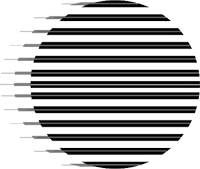How NOT to create a digital media scholarship platform: the history of the Sophie 2.0 project
DOI:
https://doi.org/10.29173/iq926Keywords:
Sophie, Sophie 2.0, Digital Humanities, FailureAbstract
Since the mid-2000s digital platforms have emerged to take advantage of the capabilities of new technology to incorporate media content, tell nonlinear stories, and reinvent the book for the 21st century. Sophie 1.0, from the University of Southern California, the Institute for the Future of the Book (IFB), and computer scientists based in Europe, was an attempt to create a multimedia editing, reading, and publishing platform. Sophie 2.0 was an international collaboration between the University of Southern California and Astea Solutions in Bulgaria to rewrite Sophie 1.0 in the Java programming language. This research will explore how the Sophie 2.0 project was unable to become a viable and wellmaintained open source product despite receiving over a million dollars in funding from the Mellon Foundation. Problems included the technological difficulty of creating an easy-to-use but completely customizable open source multimedia e-publishing platform, which was also compounded by competing visions over what this project was to be. Stakeholders did not demand a deliverable that actually worked. Funders seemed willing to overlook weaknesses in early releases for a more encompassing, if impractical, project. The computer scientists wanted to add the most features possible while, the IFB and USC Institute for Multimedia Literacy focused on creating a product based on the values of a future they hoped to create. Understanding what went wrong with Sophie 2.0 can help us understand how to create better digital media scholarship tools and to start much needed discussions about failure in the digital humanities.
Downloads
Published
How to Cite
Issue
Section
License
Copyright (c) 2018 Jasmine Simone Kirby

This work is licensed under a Creative Commons Attribution-NonCommercial 4.0 International License.
This license lets others remix, tweak, and build upon your work non-commercially, and although their new works must also acknowledge you and be non-commercial, they don’t have to license their derivative works on the same terms.
The Creative Commons-Attribution-Noncommercial License 4.0 International applies to all works published by IASSIST Quarterly. Authors will retain copyright of the work. Your contribution will be available at the IASSIST Quarterly website when announced on the IASSIST list server.







